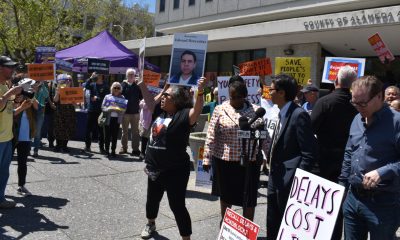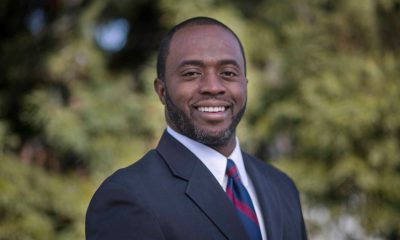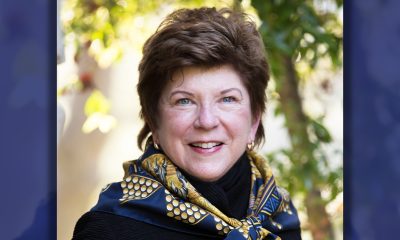Community
Closing Youth Prisons Is Not Enough
But without a plan to invest in and institute a restorative justice framework, most of that money might find its way back into local youth jails rather than into treatment and rehabilitation.
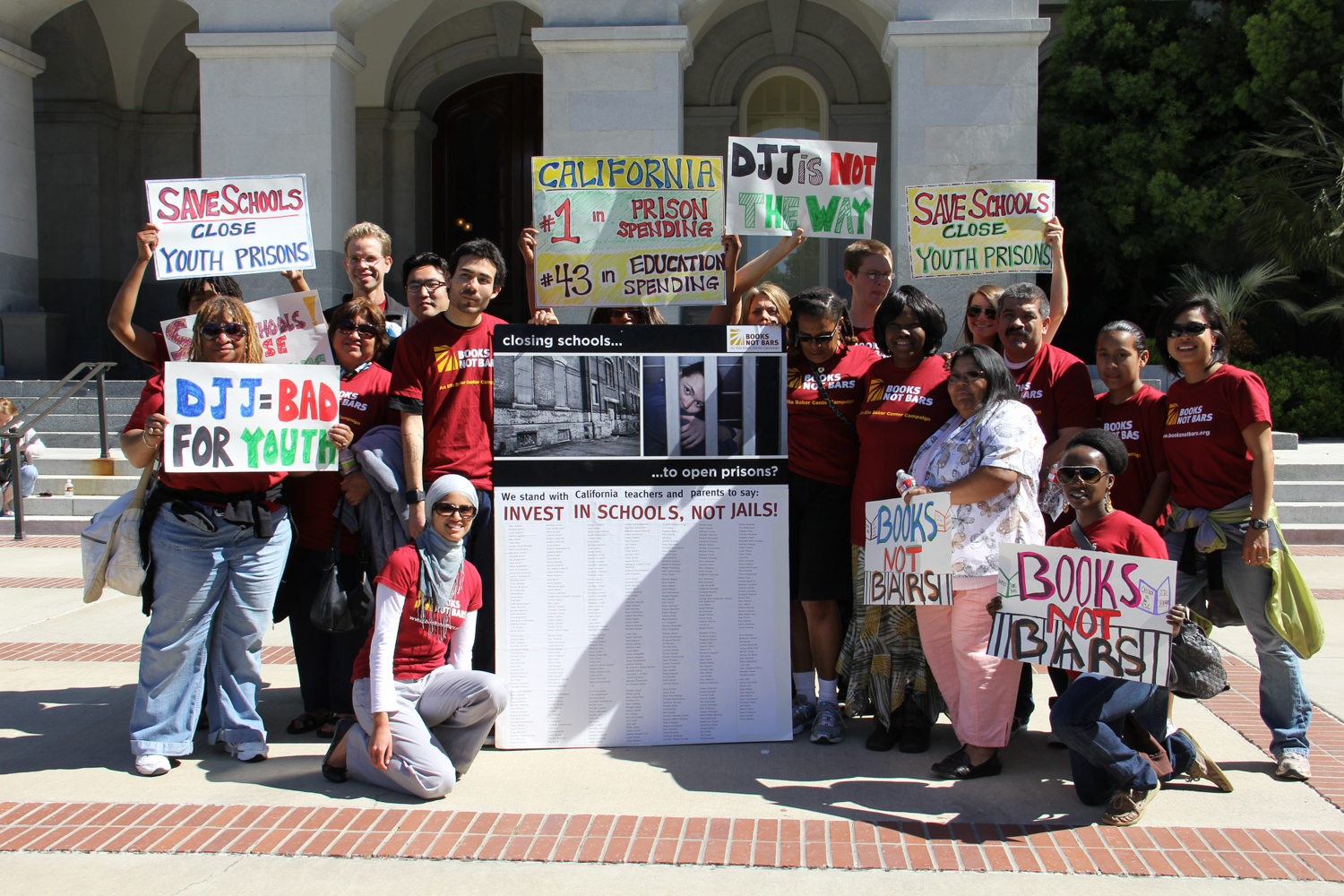
COMMENTARY
As a parent who was involved in the juvenile system as a teenager, I know too well that children who are struggling should never be incarcerated and treated like criminals.
Instead, they should be cared for as young people in need of restorative help. This May, dedicated as National Mental Health Awareness Month, was the perfect opportunity to embrace human rights and racial justice by moving from a carceral system of punishment to a community-based health system of restorative care.
“We have a system in place that is not really focused on rehabilitation,” Los Angeles State Senator Sydney Kamlager told CalMatters in January. Unlike some states, we have not had a governing body in California to oversee trauma-responsive, culturally informed services for youth–the majority of whom are youth of color–in the juvenile justice system.
Fortunately, we in California finally have a chance to make a change. California Senate Bill 823, signed by Gov. Newsom last December, shuts down California’s Division of Juvenile Justice (DJJ) and redirects millions of dollars to counties to provide care and resources for young people. But without a plan to invest in and institute a restorative justice framework, most of that money might find its way back into local youth jails rather than into treatment and rehabilitation.
Sonya Abbott and her son Anthony Johnson can attest that a transformation is long overdue. When Anthony was 16, Sonya found a bag of Xanax in his back pocket. Believing that he intended to sell the drugs, she made the difficult decision to turn him in. At the time, she viewed her decision as a way to save her son’s life, and the lives of others. Now she says, “I feel like it just made things worse.”
As is too often the case, Anthony was cycled through a number of ineffective programs and has been shuttled back and forth among several facilities. When the COVID-19 pandemic hit and the DJJ went into lockdown, Anthony was at the N.A. Chaderjian Youth Correctional Facility in San Joaquin County. Feeling lonely and depressed because of the isolation, Anthony asked for extra counseling.
“They refused to give it to me. They laughed at me,” Anthony says.
Anthony attempted suicide roughly two days later. He remembers a Chaderjian staff member witnessing his suicide attempt and saying, “You’re not doing it right, I’ll call this one in later,” then walking away. Afterward, Anthony was kept in the medical unit for a month, locked in a room for 23 hours a day, without any counseling or companionship.
Throughout all of this, the DJJ did not inform Abbott of her son’s suicide attempt, nor his consequent transfer to Patton State Hospital. After Anthony missed a scheduled Skype visit, Abbott had to call every juvenile facility in California to locate him, and only then learned that he had tried to take his own life. He remains at Patton today.
Statistics show that suicide and suicide attempts are too common. According to a 2014 report from the Office of Juvenile Justice and Delinquency Protection, “11% of the youth (in the juvenile justice system) had attempted suicide at least once,” far exceeding the percentage in the general population.
Nor are the dangers of youth incarceration justified by the outcomes. A 2015 study from the University of Washington, observed that, “juvenile incarceration is not only ineffective at reducing criminal behavior,” but that those who were incarcerated in their youth were more likely to suffer negative consequences in every aspect of their adult lives.
Abbott describes Anthony as a good kid who just got himself a little lost. “I don’t understand why there’s no resources for these kids,” she says. “They are just locked up and forgotten. I can’t let my kid be one of their victims.”
We now have an unprecedented opportunity to chart a new direction. Part of SB 823 creates Juvenile Justice Coordinating Councils (JJCC) in each of our 58 California counties, bringing together experts and constituents like Abbott and Anthony, whose lives have intersected with the juvenile justice system.
These new councils will help guide how the millions of dollars in new state funding can best be deployed to provide a continuum of care. To inform that process, youth advocates have been working to implement a community vision of care to replace the old carceral model that has failed so many of our most vulnerable young people of color.
Advocates are also pushing the state to properly resource the new department within Health and Human Services (HHS) that will provide oversight for the new system. The proposed budget is a woefully inadequate $3 million; Assemblymember Cristina Garcia and state Senator Maria Elena Durazo, joined by the California Alliance for Youth and Community Justice and members of the Free Our Kids Coalition, are pushing for a larger allocation to help scale up community-based interventions by local groups.
If a community system rooted in healing had already been in place, Sonya Abbott and Anthony might have received the help they really needed. We can do better for our kids and our communities.
Alameda County
Board of Supervisors Accepts Certification of Signatures, Will Schedule Recall Election May 14
The Alameda Board of Supervisors unanimously accepted the certification of the results of the valid signatures submitted for the recall of District Attorney Pamela Price on Tuesday evening. The Board will set the election date at a special meeting on May 14. Before the meeting, recall proponents and opponents held separate press conferences to plead their cases to the Board and residents of Alameda County.
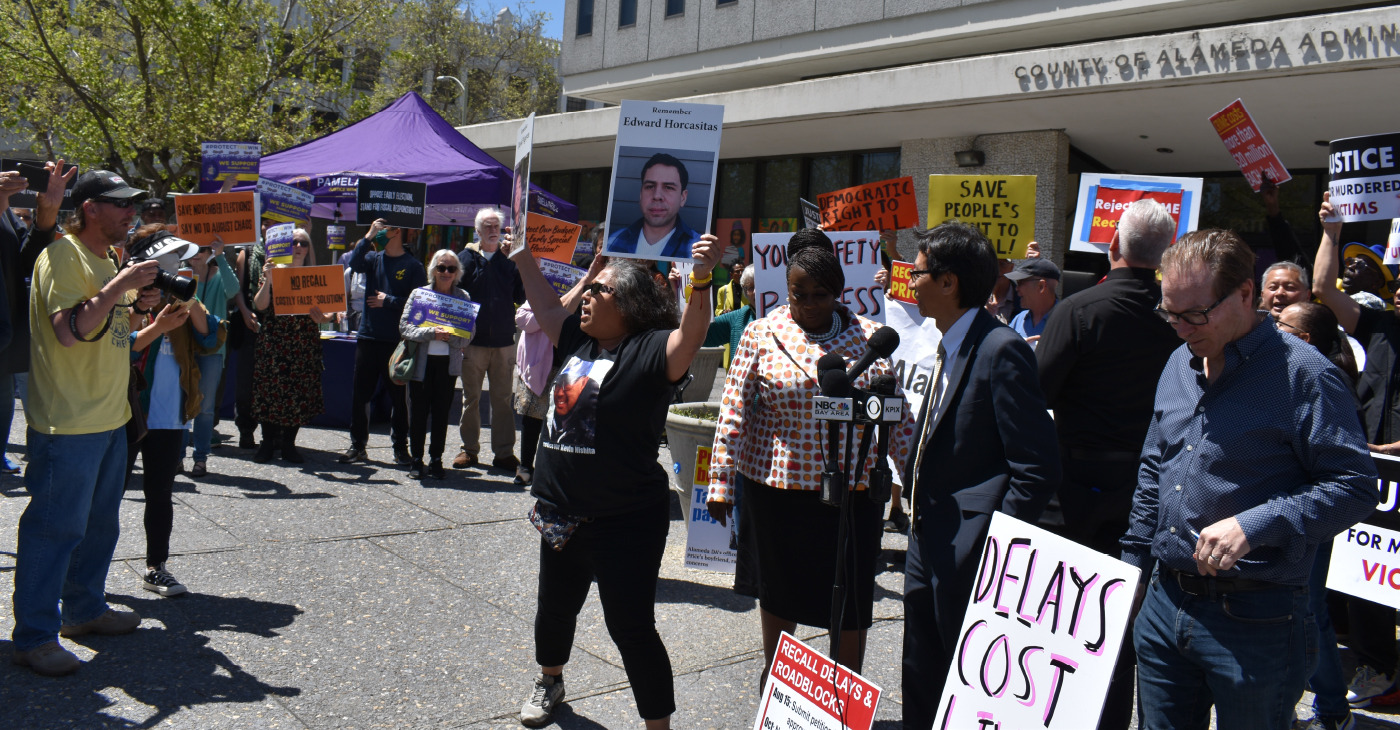
By Magaly Muñoz
The Alameda Board of Supervisors unanimously accepted the certification of the results of the valid signatures submitted for the recall of District Attorney Pamela Price on Tuesday evening. The Board will set the election date at a special meeting on May 14.
Before the meeting, recall proponents and opponents held separate press conferences to plead their cases to the Board and residents of Alameda County.
Price, who up until this point has made little public comment about the recall, held her press conference in Jack London to announce that the California Fair Political Practices Commission has opened an investigation into the finances of the Save Alameda For Everyone (SAFE) recall campaign.
The political action committee (PAC), Reviving the Bay Area, has been the largest contributor to the SAFE organization and has allegedly donated over half a million dollars to the recall efforts.
“Between September 2023 and November 2023, [Revive the Bay Area] donated approximately $578,000 to SAFE without complying with the laws that govern all political committees in California,” Price said.
Price accused the recall campaigns of using irregular signature-gathering processes, such as paying gatherers per signature, and using misleading information to get people to sign their petitions.
SAFE held their own press conference outside of the Alameda County Administration Building at 1221 Oak St. in Oakland, once again calling for the Board to certify their signatures and set a date for the recall election.
Their press conference turned contentious quickly as Price’s “Protect the Win” supporters attempted to yell over the SAFE staff and volunteers. “Stop scapegoating Price” and “Recall Price” chants went on for several moments at a time during this event.
Families of victims urged the Board to think of their loved ones whose lives are worth much more than the millions of dollars that many opponents of the recall say is too much to spend on a special election.
The Registrar of Voters (ROV) estimates the special election could cost anywhere from $15 to $20 million, an amount that is not in their budget.
The Board was presented with several options on when and how to conduct the recall election. They have to set a date no less than 88 days or more than 125 days after May 14, meaning the date could fall anywhere from late July to September.
But the County charter also states that if a general election takes place within 180 days of their scheduling deadline, the Board could choose to use the November ballot as a way to consolidate the two events.
In the event that Price is recalled, the Supervisors would appoint someone to fill the vacancy, though neither the County nor the California charter specifies how long they would have to pick a replacement.
The appointee would serve as district attorney spot until the next election in 2026. Afterwards, either they, if they run and win, or a newly elected candidate would serve the rest of Price’s six-year term until 2029. Price is unique as the only district attorney wo serves a term of six years.
The Board acknowledged that they knew last fall that this recall would come with its own set of complications when Measure B, which changed the local recall charter to match California’s, was first brought to their consideration.
Supervisors Nate Miley and David Haubert opposed discussing the measure, stating that the public would think that the Board was attempting to influence the recall campaign that had already taken off months prior.
“I think ultimately this feels like it’s going to end up in court, one way or the other, depending on who files what,” Haubert said.
Price’s legal team told the Post that the district attorney intended to consider all legal options should the recall election take place.
Miley stated that while he was in support of the amendment to the charter, he did not think it was right to schedule it for the March ballot as it would ultimately cause confusion for everyone involved.
“It has produced some legal entanglements that I think, potentially, could’ve been avoided,” Miley said.
Antonio Ray Harvey
Working Group: More Entry-Level Homes Could Help Solve Housing Crisis
The Community Housing Working Group hosted a briefing on April 23 at Cafeteria 15L in Sacramento. Discussions focused on how the housing crisis in California affects Black and Brown communities and explored ways to provide low-income families and individuals with affordable housing.
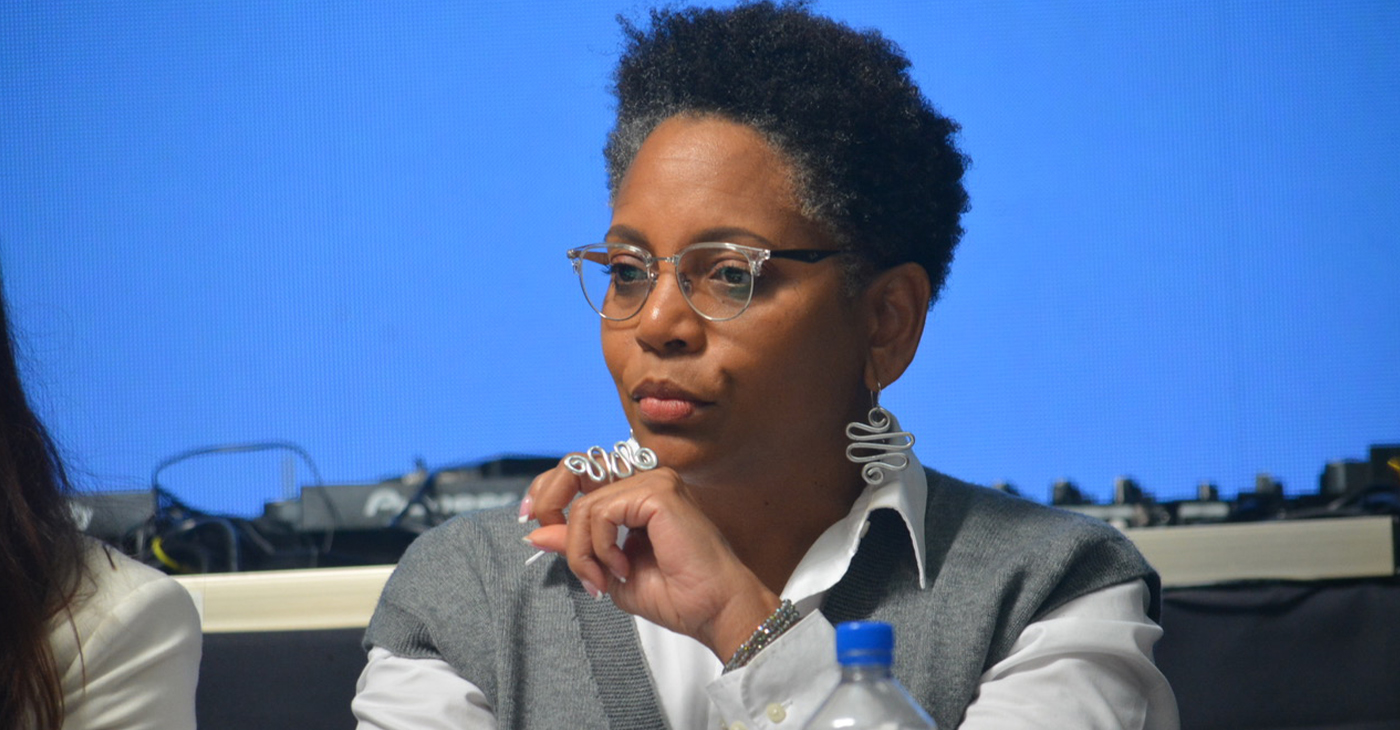
By Antonio Ray Harvey, California Black Media
The Community Housing Working Group hosted a briefing on April 23 at Cafeteria 15L in Sacramento. Discussions focused on how the housing crisis in California affects Black and Brown communities and explored ways to provide low-income families and individuals with affordable housing.
Tia Boatman Patterson, CEO and President of the California Communities Reinvestment Corporation, said “entry-level housing” is not available as it was in the past, adding that affordable units were a major point of entry into homeownership for many families in the Black community.
“My mother bought her first house when I was in junior high. It was an 850-square foot, two-bedroom and one-bathroom house in 1978. That house cost $30,000,” Boatman-Patterson said.
“A woman working part-time at JCPenney was able to afford that house. We don’t build these types of housing now. We do not build entry-level homeownership,” she added.
The Community Housing Working Group is a collection of diverse community organizations from across California working together to address housing challenges in their communities. The organization believes that solving the affordable housing crisis will require creating enough smaller, lower-cost, multi-family homes located near jobs, transit, and good schools.
The briefing included a panel discussion titled, “Exclusionary Zoning: A Look Back and a Path Forward.” Boatman-Patterson participated in that session along with Henry “Hank” Levy, Treasurer-Tax Collector for Alameda County, and Noerena Limón, consultant, Unidos U.S., and Board Member of California Housing Finance Agency.
Boatman-Patterson, a former Associate Director for Housing, Treasury and Commerce in the Office of Management and Budget for the Biden Administration, started her presentation by highlighting how exclusionary single-family zoning is contributing to continued segregation of California communities.
She said that single-family zoning originated in the Bay Area city of Berkeley in 1916.
“By creating single-family zoning and having fenced-off communities, you were able to exclude the ‘others,’” Boatman-Patterson said. “It really was a method to exclude — what they called ‘economic segregation’ — but that was a guise for racial segregation. Single-family zoning, along with redlining, became a systemic approach to exclude based on affordability.”
Title VIII of the federal Civil Rights Act of 1968 — commonly known as the Fair Housing Act of 1968 – is the U.S. federal legislation that protects individuals and families from discrimination in the sale, rental, and financing of housing. It was passed to open the doors to affordable housing.
In 1968, 65.9% of White families were homeowners, a rate that was 25% higher than the 41.1% of Black families that owned their homes, according to National Low-Income Housing Coalition. Today, those figures have hardly changed in the Black community, although White homeownership has increased five percentage points to 71.1%.
Boatman Patterson said the rate has not changed in Black and Brown communities because financing for affordable entry-level homes is almost nonexistent. The homeownership disparities contribute to the disturbing racial wealth gap in the nation, according to the National Low-Income Housing Coalition’s October 2018 report.
“We really must align the financing with the actual building of units, which we haven’t necessarily done. Because of this misalignment, I think we continue to see problems,” Boatman-Patterson said.
California Black Media
State Ed Chief Tony Thurmond Pushes Bill to Train Educators
State Superintendent of Public Instruction (SSPI) Tony Thurmond is advocating for comprehensive training for teachers in reading and math, emphasizing the urgent need to improve student academic outcomes across California. On April 24, during testimony in the Senate Education Committee, Thurmond backed Senate Bill (SB)1115, which aims to provide evidence-backed educator training. The committee passed the bill with a 7-0 vote.
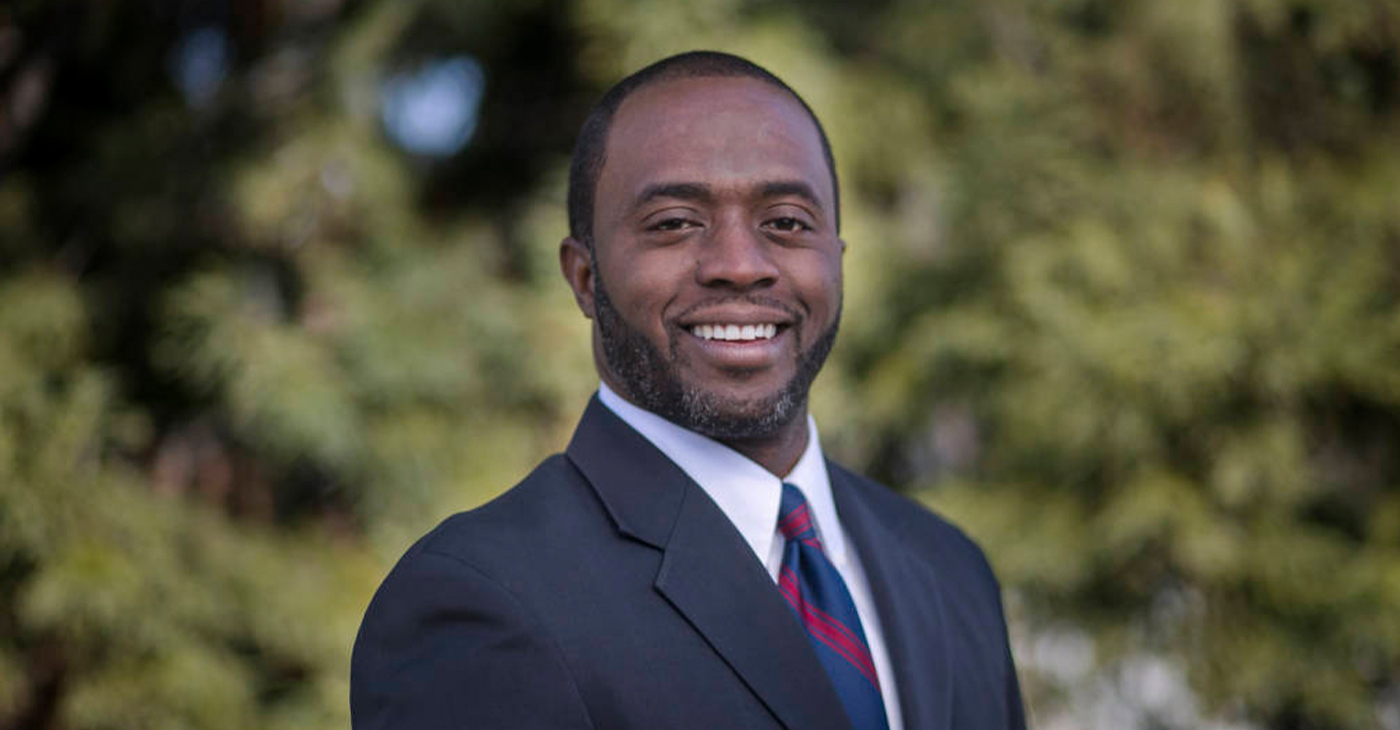
By California Black Media
State Superintendent of Public Instruction (SSPI) Tony Thurmond is advocating for comprehensive training for teachers in reading and math, emphasizing the urgent need to improve student academic outcomes across California.
On April 24, during testimony in the Senate Education Committee, Thurmond backed Senate Bill (SB)1115, which aims to provide evidence-backed educator training. The committee passed the bill with a 7-0 vote.
Thurmond pointed out to the committee that existing funding for educator training in literacy and math only covers about one-third of California’s educator workforce. SB 1115, Thurmond said, would fund the remaining two-thirds.
“This is an issue of moral clarity,” according to Thurmond. “In the fifth-largest economy in the world, and in an age when we have access to substantial brain science about how students learn, it should be unacceptable to train only some educators in the best strategies to teach essential skills.”
SB 1115 incorporates multiple research-backed methods, including phonics, and it aligns with the California ELA/ELD Framework, which encourages biliteracy and multilingualism.
Thurmond emphasized the moral imperative behind the push for enhanced training by noting that 70% of incarcerated adults struggle with reading or are illiterate.
“Every child should feel supported as they learn to read and every teacher should feel confident in their ability to support students’ foundational literacy,” Thurmond said. “SB 1115 is about ensuring that all children have the opportunity to read by third grade, and that all children have a shot at the life-changing outcomes that come from early literacy.”
The next step for SB 1115 is a hearing in the Senate Appropriations Committee on May 6.
-

 Community2 weeks ago
Community2 weeks agoFinancial Assistance Bill for Descendants of Enslaved Persons to Help Them Purchase, Own, or Maintain a Home
-

 Activism4 weeks ago
Activism4 weeks agoOakland Post: Week of April 3 – 6, 2024
-

 Business2 weeks ago
Business2 weeks agoV.P. Kamala Harris: Americans With Criminal Records Will Soon Be Eligible for SBA Loans
-

 Activism3 weeks ago
Activism3 weeks agoOakland Post: Week of April 10 – 16, 2024
-

 Community2 weeks ago
Community2 weeks agoAG Bonta Says Oakland School Leaders Should Comply with State Laws to Avoid ‘Disparate Harm’ When Closing or Merging Schools
-

 Community2 weeks ago
Community2 weeks agoOakland WNBA Player to be Inducted Into Hall of Fame
-

 Community2 weeks ago
Community2 weeks agoRichmond Nonprofit Helps Ex-Felons Get Back on Their Feet
-

 Community2 weeks ago
Community2 weeks agoRPAL to Rename Technology Center for Retired Police Captain Arthur Lee Johnson

